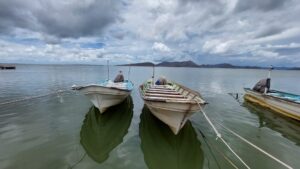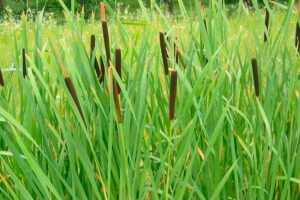For many years now, the coastal fishermen of the coastal fields that depend on the Navachiste Bay have been fighting for solutions to the contamination of this lagoon system, derived from the discharges from agricultural drains of the valley of Guasave.
Diana Escobedo Urías is a researcher at Interdisciplinary Research Center for Regional Integral Developmentof the National Polytechnic Institutewho has 25 years of experience studying the ecosystems of the northern part of Sinaloa and proposes a solution for the restoration of Navachiste Bay: the construction of artificial wetlands.
The problem of pollution from agricultural discharges
The researcher expresses that in all these years she has studied the different sources of alteration in the coastal ecosystems The study has shown that agricultural activity is the main source of degradation of the bays, as it incorporates, through the drains, important quantities of suspended solids, which are the ones that generate the silting.
"All these waters bring small particles that are then deposited in coastal ecosystems, that is, they produce siltation, which is the loss of depth, and then they also bring waters rich in nutrients due to the fertilizers that are applied and that are washed through irrigation waters and also mention what there may be of other pollutants such as pesticides and pesticides," he emphasizes.
Therefore, he states, what should be sought is to try to reduce the impact of these productive activities, which are very important for Sinaloa and the country in general.
Constructed wetlands, an alternative solution
Artificial wetlands are not new; it is a technique that is already used in the region for the treatment of wastewater generated by small communities, Escobedo Urías explains.
But they also represent a cheap and effective solution to lessen the impact of polluted waters, in this case from agriculture, and achieve the restoration of coastal ecosystems, he says.
"Agriculture contributes many nutrients that later produce or generate the phenomenon of eutrophication, which is an increase in the rate of incorporation of nitrogen and phosphorus that produces certain undesirable manifestations of the ecosystem, because they alter the environmental quality of the site. There is a modification of the trophic conditions, that is, the amount of organic matter found in the site, which alters the entire ecosystem and converts it from one thing to another," he says.
Diana Escobedo points out that discharges from the drains change the environmental conditions of the bay by causing siltation, which has an important effect on both temperature and oxygen concentrations. One of the consequences is the production of red tides or harmful algal blooms that can cause species mortality, as has been seen on many occasions.
"Species that were normally found, no longer find the right conditions to develop and leave," he says.
An analysis of the most important drains that discharge into the Navachiste Bayin which he collaborated Paula Gilacademic of the Universidad Autónoma de OccidenteThe most suitable sites for the implementation of the artificial wetlands are the drains Novobampo, Batamote y San Antonio.
How do constructed wetlands work?
According to the project developed by Diana Escobedo, the artificial wetlands are ponds of about 60 centimeters deep that have a special substrate of rock and coarse sand on which native vegetation is planted. In the case of this region, tule is foreseen, which would absorb nitrogen and phosphorus from the drainage discharges, serving as a natural filter.
Prior to the wetland there should be a sand trap to trap sediments and prevent them from silting up the wetland, but also to prevent them from reaching the bay, explains the researcher.
By maintaining the wetland, both the tule that is extracted can be reused by nearby communities as material for making handicrafts or palapas, while the sediment trapped in the sand trap can be recovered as soil rich in nutrients, he said.
Ecosystem benefits
Lowering the concentrations of nitrogen, phosphorus and suspended solids would help greatly in the restoration of northern Sinaloa's ecosystems, Escobedo Urias assures.
In the case of fishing, he adds, improving the environmental quality of the site would reduce the amount of algal blooms, improve water quality and, consequently, the species that disappeared because they could not find conditions for their development would return.
"It has a series of favorable consequences for fishing, aquaculture and tourism. We are expecting that this will greatly improve catches, because the organisms will have a more adequate place to develop and to stay, they will remain longer in the lagoon and we will probably recover bay fishing", he says.
Costs less than a dredging job
Diana Escobedo recalls that a few years ago the government invested 90 million pesos for the dredging of one of the mouths of the Navachiste lagoon system. The project of artificial wetlands estimates that it would cost between 35 and 40 million pesos, with further benefits for the ecosystem and the communities that depend on it.
"It would be much cheaper for us, but the problem is that there are hardly any friends for these projects, there is hardly any interest. I still don't understand, when the benefit is enormous, when you need someone to promote, an institution that is promoting this," he says.
The civil association Common Cause for Guasave has supported in the management of this initiative for the restoration of the ecosystem in the Navachiste Baybut so far there has not been much progress, he regrets.
The fishermen and fish farmersThe main users and stakeholders have also been supporting this project, seeking to generate meetings with municipal and state authorities.

"The design is already in place, the only question is that there is political will (for the allocation of resources). We have been in talks with Conagua, with the Irrigation District 075, with fishermen and we have even approached the Secretary of Aquaculture and Fishing of the State of Sinaloa, which we obviously know that they do not have resources, but they can be very good managers of the same", he indicates.
The researcher clarifies that CIIDIR Sinaloa does not seek to develop wetlands, because it is not an institution that executes works. As a research institution, they have already done what they should have done, which was to analyze and generate an alternative solution to the problem. Now the ball is in the government's court.



